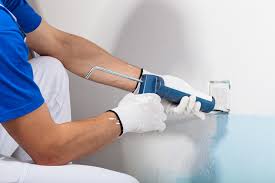Office
NO,46, 50ft Road, Rajeev Gandi Circle Laggere
Bengaluru , karnataka
India (560058)

Wall injection waterproofing is a technique used to prevent water infiltration and damage in walls.
What is Wall Injection Waterproofing?
Wall injection waterproofing involves injecting a waterproofing material, such as a polyurethane or epoxy-based resin, into the wall to seal cracks, joints, and other openings.
Benefits of Wall Injection Waterproofing
1. Effective waterproofing: Seals cracks and joints to prevent water infiltration.
2. Minimally invasive: Does not require extensive excavation or disruption.
3. Cost-effective: Can be more cost-effective than other waterproofing methods.
4. Long-lasting: Can provide long-term waterproofing protection.
Types of Wall Injection Waterproofing
1. Polyurethane injection: Uses a polyurethane-based resin to seal cracks and joints.
2. Epoxy injection: Uses an epoxy-based resin to seal cracks and joints.
3. Acrylic injection: Uses an acrylic-based resin to seal cracks and joints.
Applications of Wall Injection Waterproofing
1. Basement walls: To prevent water infiltration and damage.
2. Foundation walls: To prevent water infiltration and damage.
3. Retaining walls: To prevent water infiltration and damage.
4. Concrete walls: To seal cracks and joints.
Process of Wall Injection Waterproofing
1. Inspection: Identify areas requiring waterproofing.
2. Cleaning: Clean the area to ensure proper adhesion.
3. Drilling: Drill holes for injection.
4. Injection: Inject waterproofing material.
5. Sealing: Seal holes and joints.
Advantages and Disadvantages
Advantages:
- Effective waterproofing
- Minimally invasive
- Cost-effective
- Long-lasting